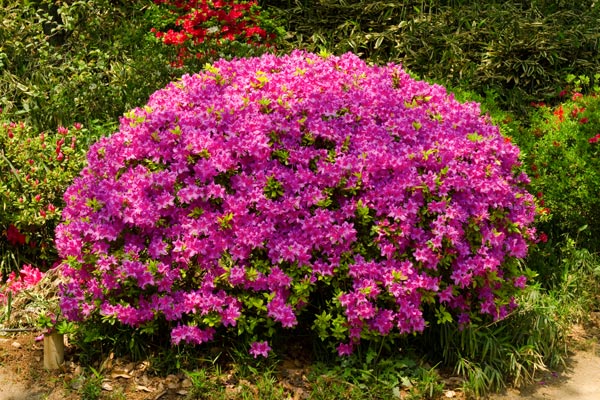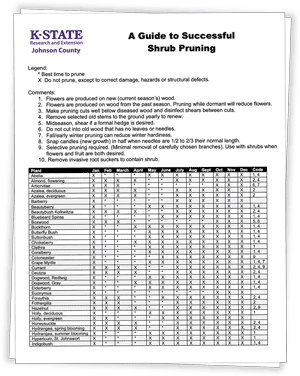Pruning is a key part of keeping plants happy, healthy, and looking their best. It’s always a good idea to remove parts of any plant that can be described by “the three D’s:
- Dead
- Dying
- Diseased
Aside from that, there are good and…not-so-good times to trim and shape trees and shrubs. Unfortunately each plant is different, so let’s consider why we prune.
Why do we prune?
There are several reasons why pruning plants is a good practice to incorporate into your gardening and landscaping routine.
Pruning allows us to:
- Control the size and shape of a tree or shrub
- Encourage younger stems (and thereby more flowers) to form
- Control the plant’s density

One of these Azalias has been carefully pruned to create and maintain a manicured, rounded shape. The other has been pruned to control its size and encourage density while allowing a more organic shape to form.
Both are correct. It all depends on the look you’re going for.

When should I prune…?
As mentioned earlier, there’s not one ideal time when every plant can be pruned, but each shrub has an ideal time. In boils down to whether blooms form on “new wood” (growth from this year) or “old wood” (growth from last year or older).
Spring-bloomers on old growth
The first plants to bloom in the spring are best pruned shortly after their flowering cycle is complete. Next year’s blooms will appear on what new growth is created this year, so come fall if you’re pruning, you’re actually cutting off the blooms you’d be seeing in spring. A good rule of thumb is to have spring-flowering shrubs pruned by Memorial Day… and if you procrastinate, any snips made after the 4th of July will leave you with sparse flowers in Spring.
Examples of these shrubs include :
- Forsythia
- Azaleas
- Magnolia shrubs
- Quince
- Rhododendron
- Mountian laurel
- Nandinia
- Pussy willow
Late Spring & Summer Bloomers on new growth
These shrubs flower best on growth from this year. This typically allows us a little more flexibility in pruning– from fall, through winter dormancy, into early spring as the shrubs wake up. Examples of these include:
- Abelia
- Barberry
- Caryopteris
- Ninebark
- Panicle and Smooth Hydrangea,
- Potentilla
- Weigela
A Word of Caution: Late Risers
Some shrubs like to sleep in after a long winter so it’s a good idea to let them wake up before trimming off any bits that didn’t survive. If you trim while they’re still dormant, you may be trimming off perfectly healthy growth!
Examples of these include:
- Crape Myrtle
- Althea (Rose of Sharon)
- Buddleia (Butterfly Bush)
- Bigleaf & Oak leaf hydrangea
Tip
Sterilize your tool after each shrub to prevent transferring any diseases from one plant to another.
Dipping the blades into a simple 9:1 ratio of water to isopropyl alcohol or bleach is an inexpensive solution for sterilizing gardening tools.
Remember to oil them before putting them away to prevent rust.
For a more thorough list of when and when not to prune a variety of shrubs, we recommend looking at the great info from the Johnson County extension office. It’s available as a PDF online.



